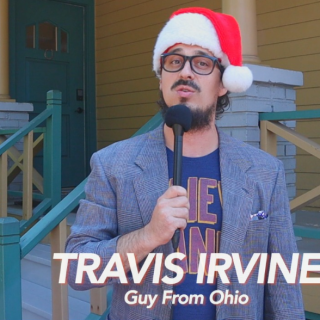Advertisement
The Salt of the Earth may be the most gut-wrenching journey you’ll take this year. Also, the most moving.
The documentary is about Sebastiao Salgado, a Brazilian-born photographer who has devoted most of his career to recording the struggles and sorrows of humanity. The quest has made him the witness to famines, wars and genocides, along with their painful aftermaths.
Like Joseph Conrad, he and his camera have peered into “the heart of darkness,” a task that inevitably has shaken his faith in mankind. “We are a ferocious animal,” he says, speaking in subtitled French.
Narrating his own photos of some of recent history’s worst examples of man’s inhumanity to man, Salgado adds that everyone should view these images “to see how horrible our species is.”
At times like these, one might well wonder whether The Salt of the Earth is titled ironically. Thankfully, life eventually finds a way to uplift Salgado’s spirit—along with ours, making the documentary the cinematic equivalent of a fire-and-brimstone sermon that ends with the joyous promise of redemption.
Co-directed by German filmmaker Wim Wenders and Juliano Ribeiro Salgado, the photographer’s older son, The Salt of the Earth starts with a demonstration of the artistry and philosophical curiosity Salgado brings to his craft. We’re shown starkly beautiful images of dirty, sweat-soaked men working in a Brazilian gold mine, all united by the hope of finding the elusive metal.
The film then backtracks over Salgado’s life: his childhood on a Brazilian ranch; his departure from his homeland, then ruled by a ruthless dictator, and relocation to Europe; his decision to abandon a promising career in banking to pursue his new-found passion for photography. Most importantly, the film describes his marriage to Lelia, who supports him during his transition to a new career and who helps to shape that career throughout his life.
It appears likely that Juliano Salgado decided to co-direct the documentary in order to get to know the father who was off photographing the world during his childhood. Attempting to make up for that absence, an adult Juliano is seen tagging along while his father attempts to document a group of walruses but is stymied by a polar bear whose presence scares them off. It’s one of the film’s lighter moments.
But there’s nothing light about the bulk of the documentary, which shows Salgado’s images of suffering people in lands as far-flung as Brazil, Rwanda and the former Yugoslavia. Even more horrifying than his photos of the victims of war are his photos of the victims of famine: skin-and-bones children and adults for whom death is a constant companion. Along with occasional nudity, these images alone are enough to justify the film’s PG-13 rating.
Despite being engrossed by the documentary, some viewers may be bothered by a nagging question: Why is Lelia, Salgado’s supportive wife and collaborator, given such a small role in the telling of her husband’s life story?
That question is set aside toward the end, during a section that describes the despair into which Salgado has fallen after years of photographing mankind at its worst. Lelia finally appears in order to talk about her attempts to revive his spirit. Suffice it to say that this may be the only recent documentary in which the environment is seen as a source of healing and optimism.
Filled with images that are achingly beautiful and devastatingly sad—often simultaneously—The Salt of the Earth doesn’t just pay homage to an exceptional photographer. It allows us to share in the anguish and hard-won hope of an exceptional man.
It’s a powerful experience.
Rating: 4½ stars (out of 5)
The Salt of the Earth, rated PG-13, opens Friday (May 1) at the Gateway Film Center and AMC Lennox Town Center 24 in Columbus.



